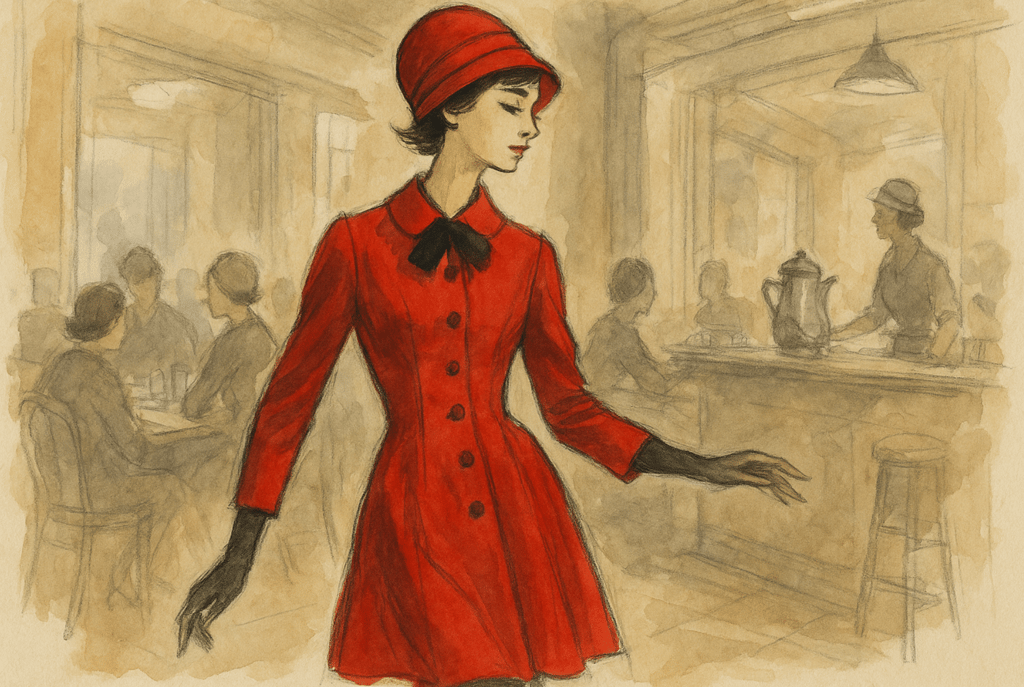The Forgotten Queer History of the Canteen: How Wartime Spaces Became Safe Havens
During WWII, women’s canteens became more than tea stops—they were quiet safe spaces where queer women found connection and companionship on the home front.
FOOD HISTORY & TRADITIONS


When we picture World War II canteens, we think of steaming cups of tea, cigarettes, and sandwiches handed to weary factory workers and soldiers. These places, often run by women, are remembered as cheerful symbols of morale and resilience. But beneath their bustling, home-front image, some of these canteens held a quieter, largely forgotten significance.
For many queer women, especially those serving in the military, working in factories, or volunteering far from home, women’s canteens became unofficial sanctuaries—rare spaces where they could relax, connect, and, sometimes, form romantic relationships in a world where such connections had to remain hidden.
Women’s Canteens: More Than a Cup of Tea
During WWII, women’s canteens popped up across cities and bases to serve the needs of the growing female workforce and auxiliary military branches. Staffed by women and catering primarily to women—nurses, factory workers, transport crews, and members of the Auxiliary Territorial Service (ATS)—these canteens offered warmth, food, music, and a respite from long hours and rigid rules.
Unlike pubs or men’s mess halls, these canteens were largely free of the scrutiny and tension that often accompanied mixed-gender spaces. Women gathered to share news, laugh over tea, and escape, if only briefly, the exhausting pressures of wartime life. It was this atmosphere of informality and camaraderie that made them quietly transformative.
Queer Connection in a Constrained World
For queer women, whose identities were often erased or criminalised, canteens became spaces of subtle liberation. Though never explicitly designed as LGBTQ+ spaces, their all-female environments allowed for freedoms that were rare elsewhere: holding glances a little longer, sharing dances, exchanging letters, and forming friendships that blossomed into relationships.
Some canteens, particularly those near military bases or hospitals, hosted social evenings or dances where female guests far outnumbered men—or where no men were present at all. These events, often overlooked by official records, became known among queer women as safe spaces to connect without fear of immediate judgment.
It wasn’t a public or activist form of queerness—such a thing was nearly impossible in the 1940s—but it was a kind of community, improvised and fleeting yet deeply meaningful. These canteens offered a taste of belonging in a time when isolation was the norm for women who loved other women.
The War’s Hidden Legacy for LGBTQ+ Women
When the war ended, most of these canteens closed. Women returned to homes, families, and a society eager to restore pre-war norms. The connections made in those smoky, tea-scented rooms often dissolved, sometimes by necessity and sometimes by choice, as the world shifted back to stricter social rules.
But for many queer women, these spaces were life-changing. They marked the first time they’d met others like themselves, the first time they’d felt part of a shared, if secret, network. Some relationships endured, hidden within marriages of convenience or carefully private lives. Others simply lived on as memories—sweet, brief, and revolutionary in their own way.
Fun Fact: The Women-Only Dances
Archival accounts and oral histories reveal that some canteens quietly hosted women-only dances on slow nights, allowing attendees to pair off freely on the dance floor. Music played from gramophones, skirts swirled, and for a few hours, the rules of the outside world slipped away. These events, whispered about among those in the know, became touchstones of wartime queer culture—never officially acknowledged, but never forgotten by those who found companionship there.
Why These Stories Matter
The queer history of WWII women’s canteens often goes unmentioned, overshadowed by broader narratives of rationing, resilience, and service. But these stories remind us that even in times of upheaval, people carve out spaces—however small—for connection, identity, and love.
They also underscore how war, for all its destruction, sometimes created new social dynamics. With so many women working, serving, and living apart from traditional domestic structures, chances for queer companionship emerged in unexpected places. The canteens weren’t revolutionary by design, but in their warmth and informality, they became quietly radical havens.
Remembering these spaces allows us to see a fuller picture of the home front—not just the tea and sandwiches, but the hidden lives and loves that thrived, if only briefly, in the midst of global turmoil.
